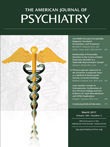Abuse of psychiatry in the Soviet Union was one of the signature human rights issues of the 1970s and 1980s. Political dissidents could find themselves suddenly deprived of freedom after a diagnosis of mental illness and incarceration in a psychiatric facility. Even querulous people who pestered local officials with complaints about minor injustices or neglected civic needs might end up on a psychiatric unit, treated with potent antipsychotic drugs, and surrounded by people with serious mental disorders. Soviet practices were widely considered to blight the reputation of psychiatry as a whole.
Robert van Voren, a young Dutch human rights activist, helped to found and headed the International Association on the Political Use of Psychiatry (today known as the Global Initiative on Psychiatry), the organization that led the fight against Soviet abuses. Cold War in Psychiatry, a quirky but engaging book, is van Voren's history of the struggle, a mix of personal reminiscences, accounts of interviews with key players, and documentation from newly available archives, including the files of the Stasi, the notorious East German secret police. His account centers on the effort to censure and expel the official representatives of Soviet psychiatry from the World Psychiatric Association (WPA) in 1983 and their subsequent readmission during the era of perestroika in 1989.
Abuse of psychiatry in the Soviet Union had deep roots. Psychiatric hospitalization of dissidents dates back to Czarist times, probably because it uniquely both contains and discredits threats to the regime. Communist ideology further enhanced psychiatry's value to the ruling authorities. In the “workers' paradise,” where legitimate dissent was inconceivable, protest was necessarily written off as a reflection of irrationality, often of a socially dangerous nature. Moreover, leading Soviet psychiatrists promoted a nosology that was peculiarly amenable to abuse, including “sluggish schizophrenia,” a disorder said to be without overt signs of psychosis other than a grandiose tendency to focus on overvalued ideas (e.g., public advocacy of democratic principles).
The earliest exposés of Soviet practices came from dissidents themselves, including the Moscow-based Working Commission to Investigate the Use of Psychiatry for Political Purposes. By the early 1980s, efforts to combat Soviet practices focused on expelling the official Soviet psychiatric association from WPA, an approach supported by the leading Western psychiatric organizations, including the American Psychiatric Association (APA) and the Royal College of Psychiatrists in Britain. Using expulsion as a means of chastising the recalcitrant Soviets was both controversial and uncertain of success because WPA leadership and many other psychiatric associations feared fracturing world psychiatry. However, Soviet resistance to acknowledging even well-documented cases of abuse appeared to seal their fate, and rather than be expelled at the 1983 World Congress of Psychiatry in Vienna, the Soviets withdrew from WPA.
Almost immediately, the Soviets themselves and their supporters began to maneuver over their readmission at the next World Congress in 1989. In the end, though, political changes in the Soviet Union itself had more of an impact on the outcome than the vicissitudes of psychiatric politics. Mikhail Gorbachev's proclamation of glasnost—a new period of openness in Soviet society—led the government, often over the opposition of the psychiatric establishment, to a greater willingness to acknowledge past abuses and to abandon the use of psychiatry for the containment of dissent. The key event was Soviet agreement to a visit by a 25-member investigative team from the United States, organized under the National Institute of Mental Health auspices and led by Loren Roth, M.D., which visited the Soviet Union in early 1989.
Given the change in attitude of the Soviet government, WPA members at the World Congress in Athens later that year voted to readmit the official Soviet organization. Significantly, an organization of dissident Soviet psychiatrists also became an official member of WPA at the same time. After the breakup of the Soviet Union, the political use of psychiatry waned, although reports continue to surface of abuse in other countries, such as China, where it retains its peculiar utility for the communist regime. These days, former campaigners against psychiatric abuses have turned to advocacy for psychiatric services, sounding much like their Western counterparts as they decry governmental neglect of the needs of persons with mental disorders.
The author's history of these events is a potpourri of personal recollections and biographical discursions. Special attention is given to Mel Sabshin, M.D., then APA Medical Director, and Jochen Neumann, M.D., an East German psychiatrist who, like Sabshin, was a member of the WPA Executive Committee. Sabshin, who in his younger years had communist sympathies himself, was among the strongest voices opposing Soviet practices. Neumann, still a believing communist but not insensible of the problems in the Soviet Union, was the leading representative of the Eastern bloc. Also making appearances are East German spies, the KGB, and an assortment of psychiatrists with political ambitions in world psychiatry, with both more and less admirable motivations.
Someday, a full academic history of these events will be written. But such a volume will not be able to convey nearly as well as this what it felt like to be involved in the struggle against psychiatric abuses. And it almost certainly will not be as enjoyable a read.

